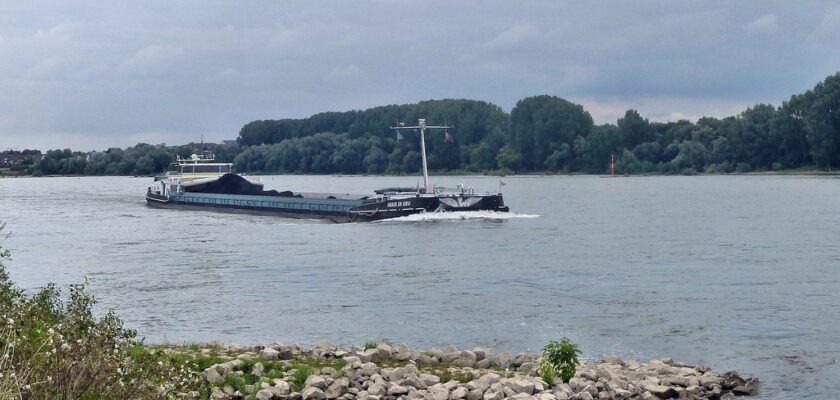Rhine Valley
Rhine Valley is a picturesque area in the Rhine River Valley in Germany, with castles, historic towns and vineyards, a variety of spectacular landscapes – a UNESCO World Heritage Site since 2002.
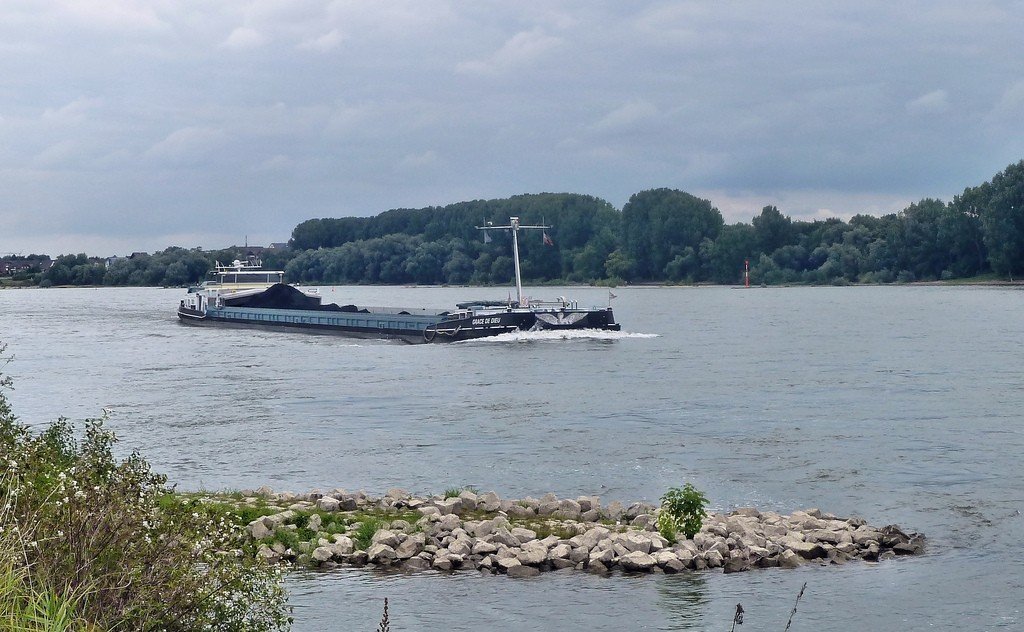
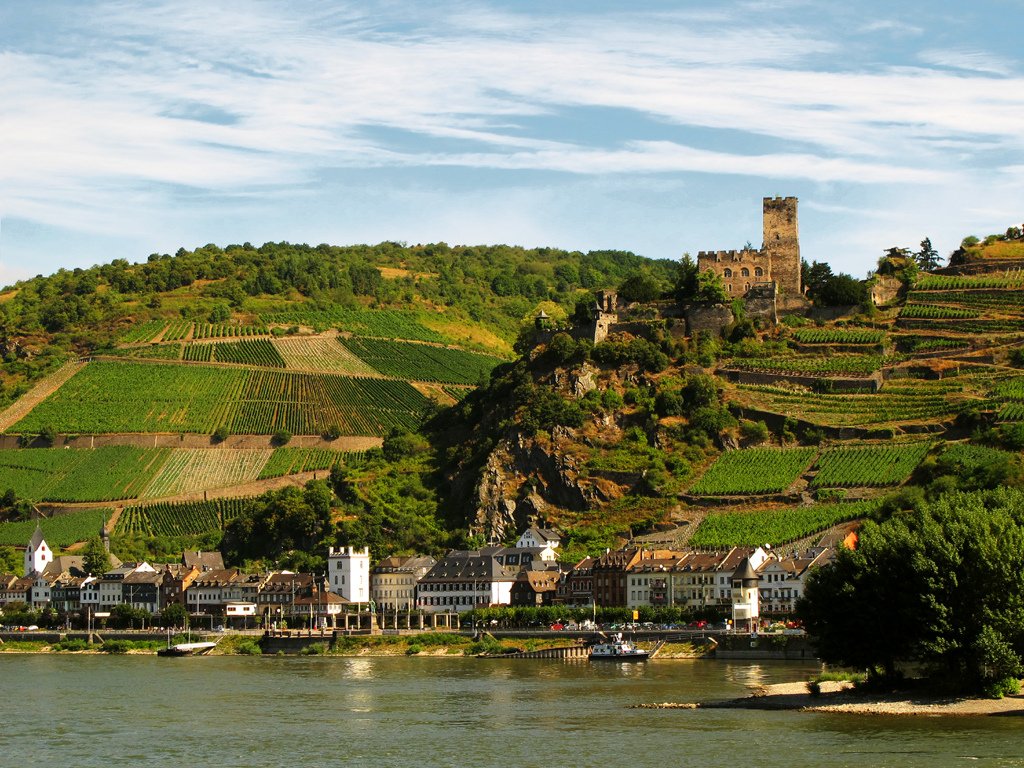
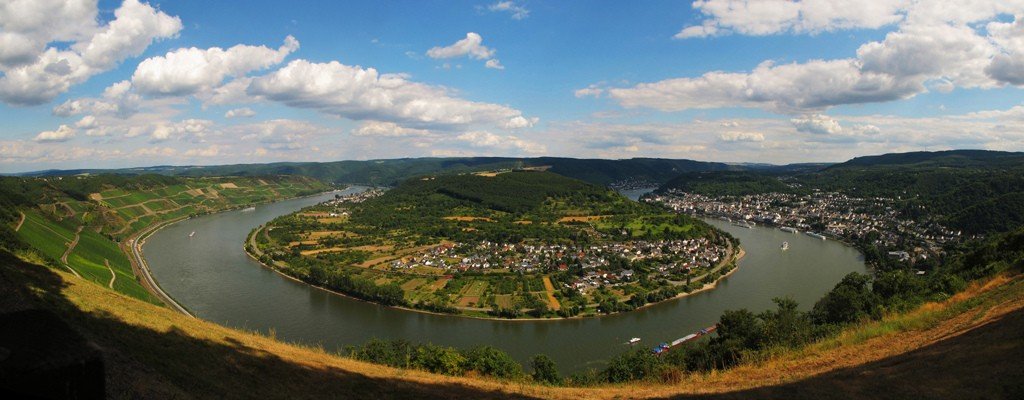
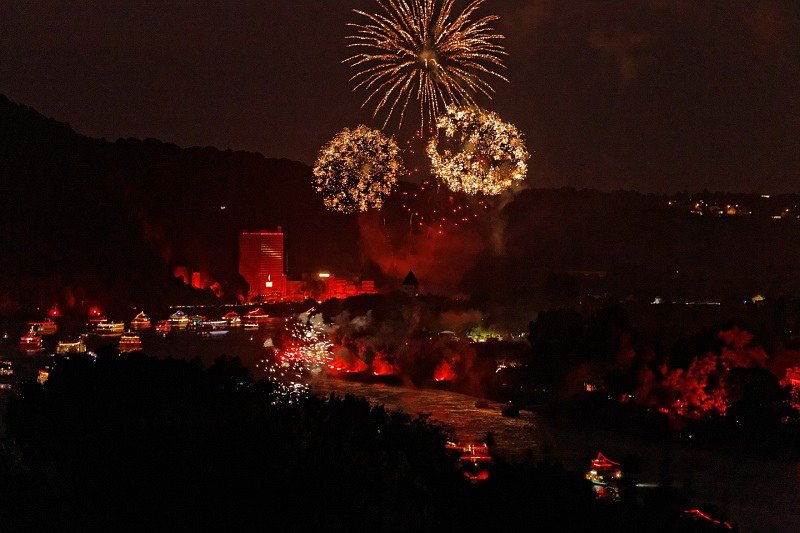
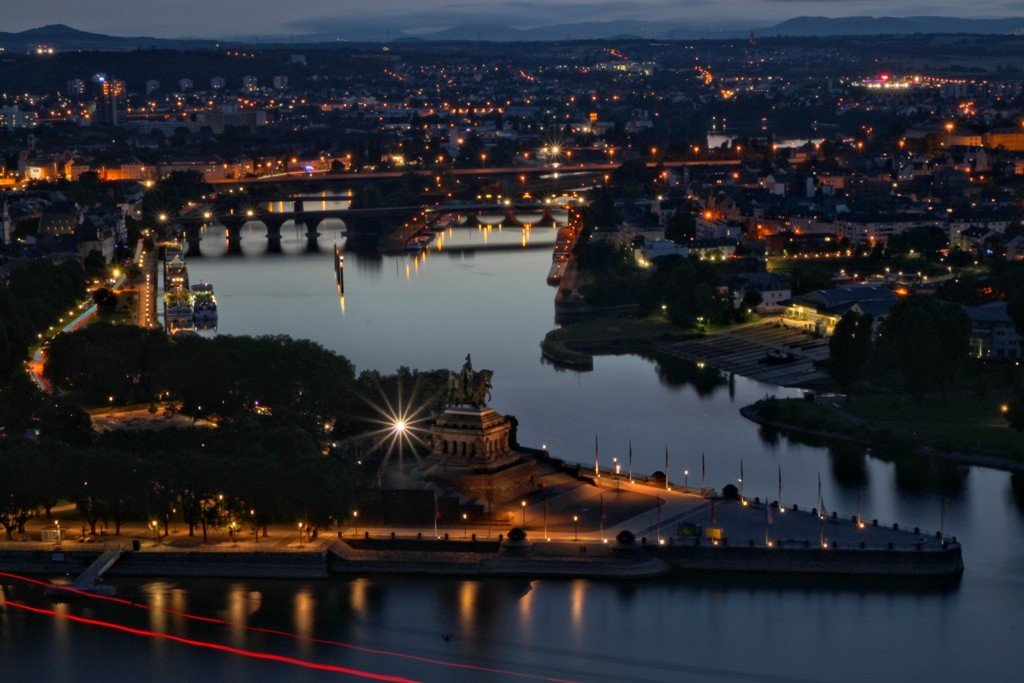
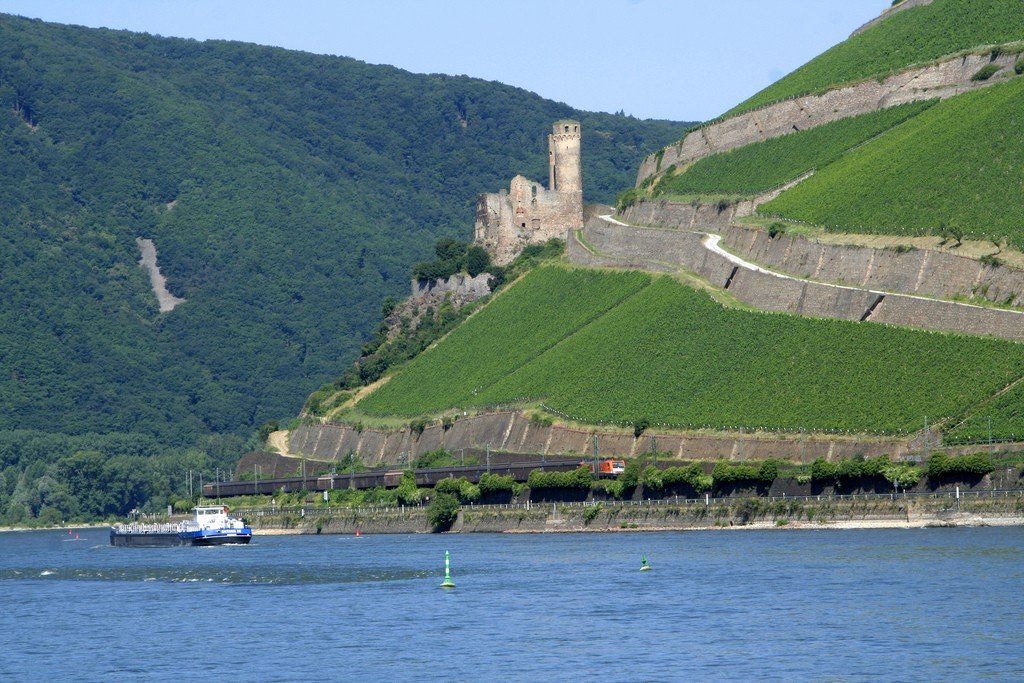
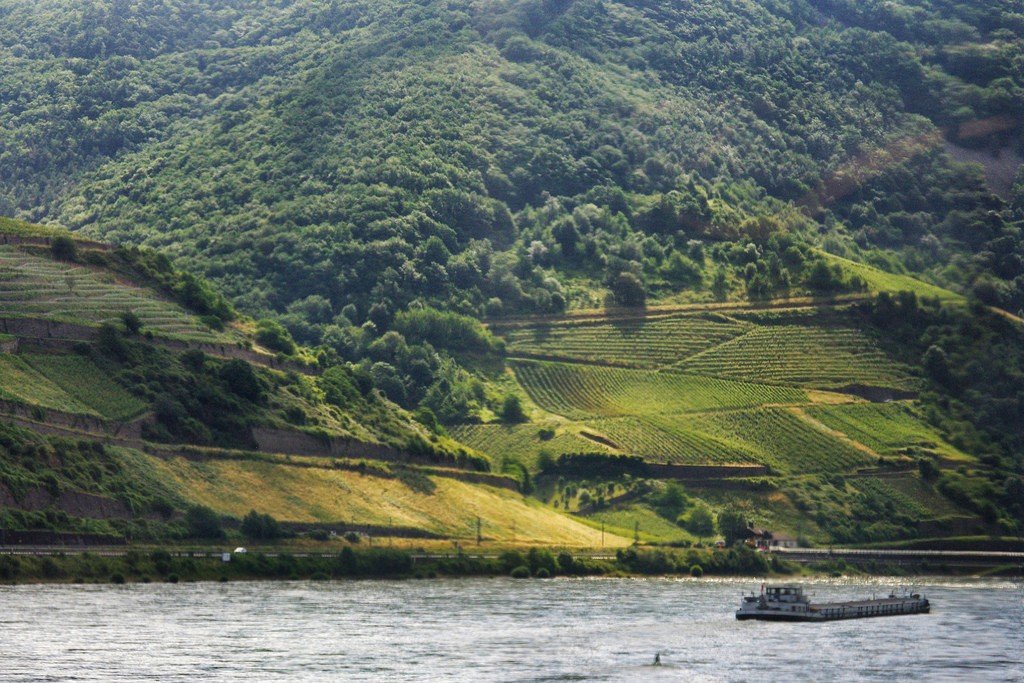
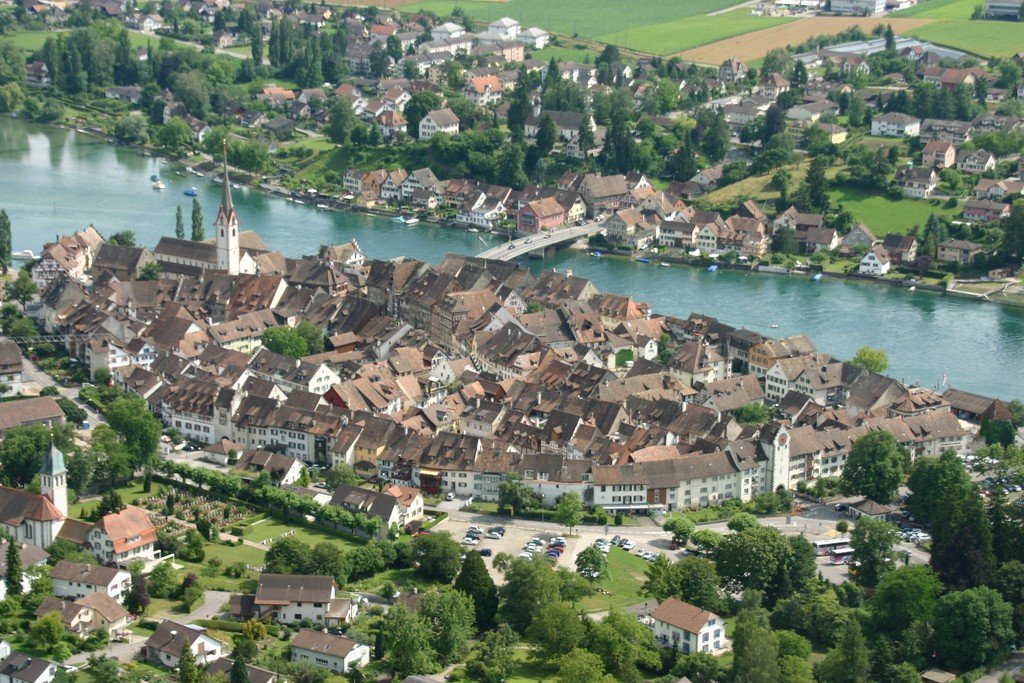
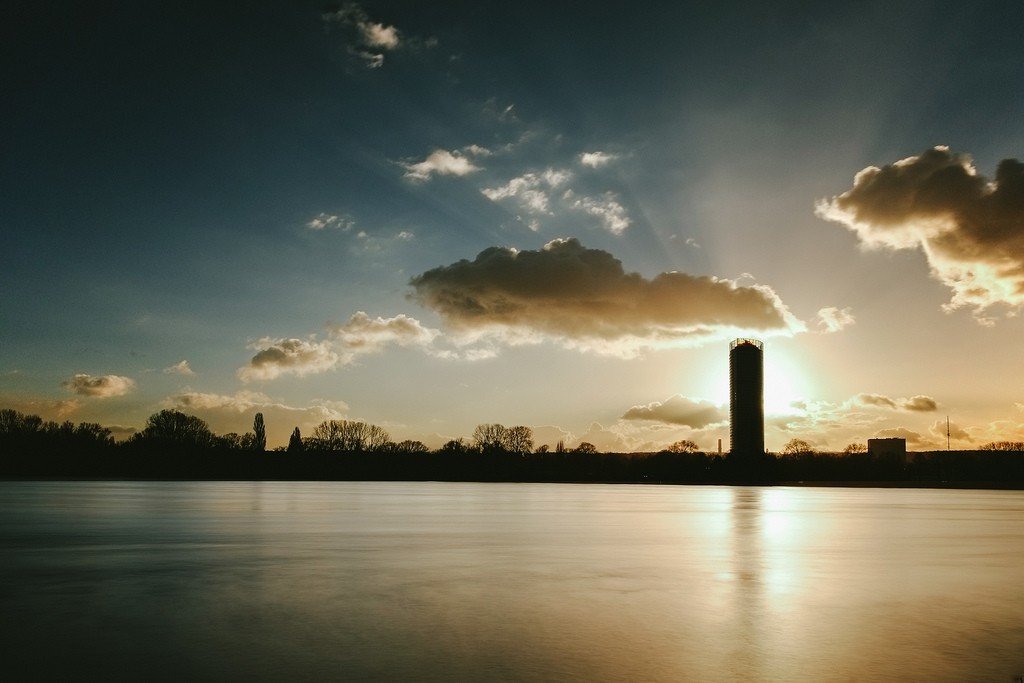
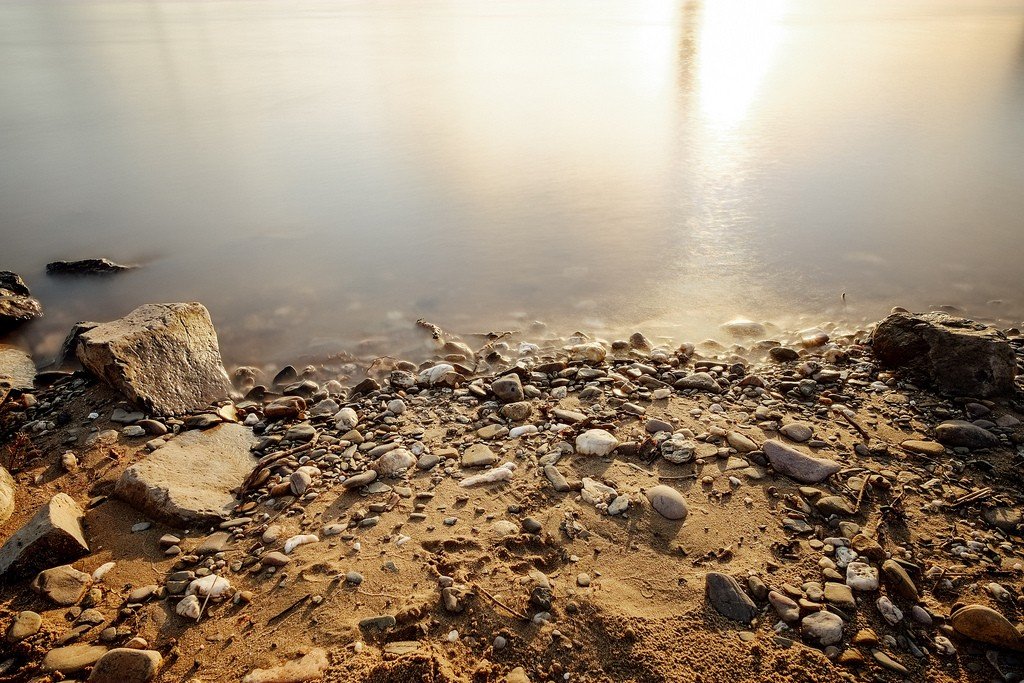
General information
The Rhine Valley is a fine example of how one of Europe’s most important transportation routes has facilitated cultural exchange between Mediterranean and Northern countries for thousands of years.
The steep slopes of the river have been terraced for agriculture for many hundreds of years, and the warm, south-facing slopes are ideal for growing grapes, and the area is justly famous for its wines.
.The wonderful scenery of the narrow valley with its towns, castle ruins, and high mountains make it one of the most important tourist areas in Germany. The waters of the Rhine are navigated by both transport and tourist cruise ships. More than 20 picturesque castles and historical ruins are located on the banks. Only two of the many fortresses are well preserved – Pfalzgrafenstein near Kaub-na-Rhein, as well as Maxburg, many fortresses long ago fell into disrepair and were destroyed, while others were converted into hotels.
.One of the most famous sights to see from a cruise ship is the Lorelei Rock, which rises 120 meters above the water. Locals tell many legends about the water maiden, who is said to have lured men into the treacherous waters of the river.
.
Ever since the Enlightenment, the striking beauty of the Middle Rhine has stirred the imagination of musicians, artists and writers. Romantic visions of crumbling feudal castles, emerald valleys and picturesque mountains have inspired poets, writers and composers – among them Lord Byron, Alexandre Dumas, Victor Hugo and Richard Wagner.
The Romantic Rhine – from Mainz to Bonn
Among the most beautiful landscapes not only in Germany but also in the world is the Rhine Valley from Bingen to Bonn, where Germany’s main river cut a narrow valley through the Rhine schist mountains. In the Middle Ages, many castles were built on the coastal cliffs. Ancient legends and tales are associated with them. “Father Rhine” is sung in folk songs, and poets, composers and artists have dedicated their work to it.
.
Here, as well as in the valleys of the Mosel and some other Rhine tributaries such as the Nahe, Lahn and Ahr, vineyards add a special charm to the landscape. The wine produced here is highly prized by connoisseurs.
As soon as you leave Mainz, you can see the old Roman fortress Castelium Mattiacorum (now called Castel) on the opposite, eastern shore, followed by a Dutch sailing ship used as a restaurant.
.Shortly after the bridges, on the same bank, is the waterfront of the Wisbaden-Biebrich district with a huge castle-palace.
.Near the town of Bingen, where the river leaves the Upper Rhine lowlands and continues through the Rhine schist mountains, there is a navigational hazard called the Binger Loch. Here, where treacherous whirlpools swirl in the Rhine riverbed, the Roman commander Druse had a wooden tower built on a small island in 8 BC. In 1208, the archbishops of Mainz set up a customs post at this place – a stone watchtower, which later became known as the Mouse Tower (Mauseturm).
.Near the town of Rudesheim am Rhein (Rudesheim am Rhein), above the river, on the top of Mount Niederwald in 1877-1883, a giant monument (Niederwalddenkmal, 37.6 m) was erected to commemorate the founding of the Second Reich in 1871. It was erected with donations from the people (a total of 1.2 million marks were required). It is crowned by a 10.5-meter-high figure of Germany. The monument is decorated with life-size bronze sculptures of almost 200 outstanding personalities. It took 75 tons of metal to make them. From the foot of the monument there is a wonderful view of the Rhine valley, Bingen, the river with ships passing below. Around it is a picturesque park with walking paths. The monument can be reached by cable car from Rüdesheim am Rhein.
.A landmark in Rüdesheim is the Drosselgasse alley, which is famous for its romantic wine cellars.
.The region produces more than 3 million bottles of wine per year. Excursion programs offered here include: “Wine and Gastronomy”, “Night Rüdesheim”, “Musical Journey to the Present”, “Romance of the Rhine”, and “The Great Knight’s Feast in Rüdesheim”. During the latter, tourists are served monastery sour cream soup with Riesling, pork leg in honey, baked apples in cognac with raisins, almonds and whipped cream at a table set on the street.
.Five kilometers below Bingen on the left bank of the Rhine, Prussian Prince Friedrich built the neo-Gothic style castle Stone on the Rhine (Burg Rheinstein) in 1829, which has a small wine cellar.
.The castle Burg Sooneck (1015, on the left bank of the Rhine, 4 km below the castle Stone on the Rhine) was destroyed four times, finally rebuilt only in 1834-1845. Besides the beautiful view of the Rhine valley, tourists are attracted by the valuable collections of antiques and the restaurant with a stylized interior.
.
The town of Bacharach (Bacharach, 14 km below Bingen), nestled in a valley on the left bank of the Rhine, is considered by connoisseurs to be the most characteristic town of Rhine winemakers. For five centuries three fortress towers have been looking out over the river. A fourth, wooden one, is located behind the town, with rows of vines stretching straight up to the sky. The old house (Altes Haus, Marktplatz, 1568) with its beautiful pointed roofs and bay windows is among the most picturesque and best known half-timbered buildings in the middle reaches of the Rhine.
.Above the town rises Stahleck Castle (Burg Stahleck, 11th century), founded by the archbishops of Cologne. Later the Palatinate used it as a bastion to protect the northern borders of their possessions. A special feature of the castle is the water-filled moat in front of the western wall, carved in the rock and filled with water. The Staleck, destroyed in 1689, was rebuilt in 1925 according to the old plans and is now one of the most popular youth hotels on the Rhine. The view from the outdoor area is marvelous. You seem to be high above the middle of the river, right above the passenger ships and barges passing below.
.
Above the town of Kaub (Kaub, on the right bank of the Rhine, 4 km below Bacharach) on the top of a high mountain stands the castle of the Good Rock (Gutenfels, XIII century) with a powerful main tower. It received its present name after it successfully withstood a siege by the Landgraves of Hesse in 1504. During the Thirty Years’ War, the castle was home to the Swedish King Gustav Adolf for a long time. In 1807 the castle was destroyed by Napoleon’s order. It was restored in 1889-1892. After painstaking restoration a hotel was opened in the castle (1953). On a small island opposite Kaub there is the fortress Pfalzgrafenstein (Pfalzgrafenstein). The Holy Roman Emperor Ludwig IV of Bavaria (1283-1347) in 1326 ordered to erect a pentagonal tower, which in 1340 was surrounded by a three-tiered fortress wall. The southern bastion and the dome above the tower were built in 1607. The fortress has never been destroyed.
.
On the east bank of the Rhine, near the town of Kaub, there are two castles: one on the water, the other on the mountain. The lower one was used to collect taxes from sailing ships, later steamboats.
The legendary rock of Loreley on the right bank rises 132 meters in the most picturesque place of the narrow Rhine valley. No castles have ever been built on the rock or at its foot. Numerous works by artists and Romantic poets have made it the most famous rock on the Rhine. The cliff drops steeply down to the Rhine near the lattice-fenced areas. The view is unparalleled: the river, steep green mountains, the outskirts of the towns of St. Goar and St. Goarshausen, trains dipping in and out of tunnels. At the town of St. Goarshausen on the right bank of the Rhine, below Lorelei Rock, one can fearlessly approach the bronze statue of a mermaid.
.
On the mountain above the town, the Castle of the Cat (Burg Katz) stands proudly above the town. The castle’s owners, the Counts of Katzenelnbogen, gave their other property, Burg Thurnberg Castle, the joking nickname Mouse Castle (Burg Maus, 1363). It is located 3 kilometers downstream from Kotzka Castle. At the beginning of the 20th century, the castle was restored with careful preservation of its medieval appearance. Birds of prey (eagles, falcons, kites) are now kept here. Masters of falconry organize daily demonstration flights of their pets for the public.
.
The main attraction of the town of Braubach (Braubach, on the right bank of the Rhine, about 10 km south of Koblenz) is the castle Marksburg (Marksburg), standing above the town on a high wooded mountain. From the time of its first mention in 1231 to the present day, the castle has been used as a dwelling and has been continuously expanded. The part of the castle called Rheinbau with half-timbered buildings and a preserved medieval well was built in the 18th century. The inner courtyard is accessed through five gates and a staircase carved into the rock. The castle has preserved its original appearance thanks to the fact that it has never been besieged. Inside, there is a museum and a library with a large collection of books about castles.
Lahnstein stands on the right bank of the Rhine at the confluence of the river Lahn. On its southern bank on the eastern outskirts of the city (1.5 km from the Rhine) in 1245 was erected the Corner Castle on the Lahn (Burg Lahneck). Its interior is of particular interest. In August a festival (Burgfestspiele) is organized within its walls. The view of the castle is particularly beautiful from the ancient bridge over the river Lahn.
The 65 km long stretch of the Rhine Valley between Rüdesheim, Bingen and Koblenz is a UNESCO World Heritage Site.
.The Legend of Lorelei
In the narrowing of the Rhine, where the river waves break at the high cliff, many ships and boats have been wrecked. Poets have found their explanation: the mermaid Lorelei with the appearance of the moon sat down on a high rock, which now bears her name, combed her blond hair with a golden comb, enchanted the captains of passing ships with her marvelous singing, bringing misfortune and destruction on them. The legend of Lorelei entered literature thanks to a ballad composed in 1802 by the German Romantic poet Clemens Brentano (1778-1842). It became universally known after the appearance in 1823 of the famous song to words by Heinrich Heine “Ich weib nicht, was soll es bedeuten…” (“Ich weib nicht, was soll es bedeuten…”). (“I don’t know what has become of me.”).
